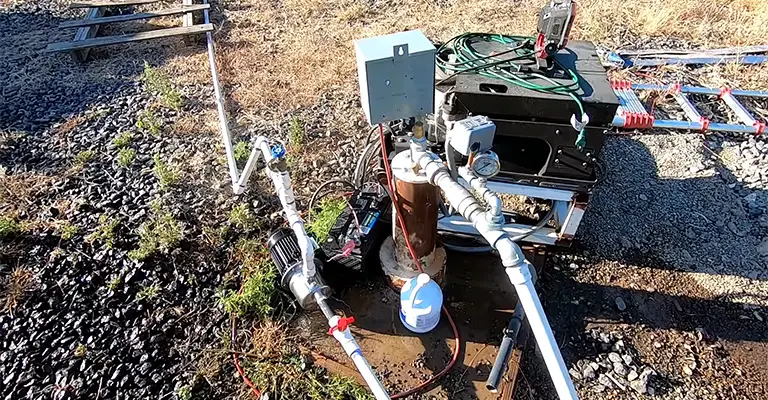When utilizing a hose connected to a well water system, many homeowners often wonder how long they can safely run the hose without causing any issues to the well or its pump.
The duration for which you can run a hose on well water depends on several factors that need to be considered.
It is crucial to strike a balance between utilizing the water you need and ensuring the longevity and efficiency of your well system.
You can run your hose for 30 minutes to 2 hours without causing any damage to your system. This is according to most homeowners who use private wells.
Assuming that the well pumps water at a rate of 2 gallons per minute with a pressure of around 50 psi.
How Long To Run A Hose On Well Water?
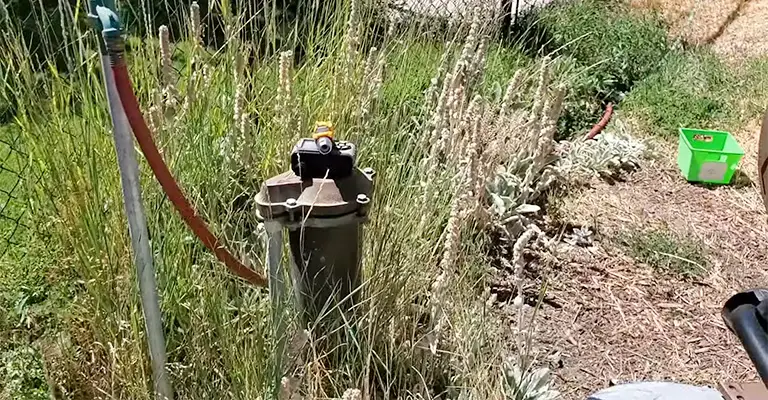
It is difficult to answer this question precisely.
There are several factors that determine the amount of water pumped out of your water well, including its depth (depth), the flow rate of the water (the flow rate of your water well’s flow), and the pressure of the water.
Generally, you can run a hose for as long as you like without damaging a shallow well pump if you have one. Those with deep wells, however, should avoid over-pumping their wells because they can cause damage to their pumps.
Depending on the size of your pressure tank that holds water, how long you can run a hose on your well water may also be affected. After reaching a certain water level, the pressure tank triggers the well pump to start pumping water.
After the water level returns to normal, the pump stops. The pump will keep working until the tank fills back up with water if you run a hose continuously on the well.
There is, however, no possibility of this happening anytime soon since water is being withdrawn faster than it is being pumped. You may cause your well pump to malfunction or overheat if you do this.
There may be a maximum running time associated with some good pumps. As soon as the latest models have run continuously for a set time, they turn themselves off automatically.
Most good pumps are restricted to working less than two hours and will restart after 30 minutes of rest (cooling down).
It is evident from this discussion that how long you can run a hose on well water depends on several factors.
Contact your well contractor if you are unsure when it is safe. You can get the best advice from a contractor who knows everything about your well, so ask for help from them to calculate the factors above.
How Far Can You Run A Hose On Well Water?
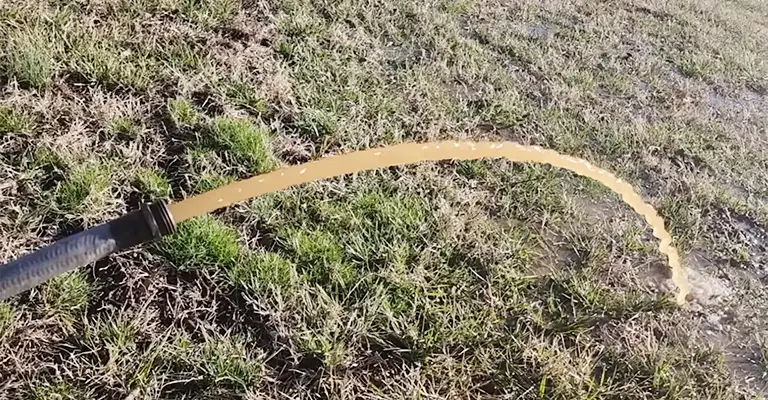
Several factors determine the final answer to this question, such as the well’s flow rate, the diameter of the hose, and the elevation.
There should not be any problems running a hose across well water for several hundred feet in general.
Distant problems are not an issue. You would find it hard to maintain a high altitude. As long as you’re not hiking a lot uphill, you should have no problems. When trying to reduce your flow, a small diameter pipe usually suffices.
For a budget-conscious buyer, this is probably a better choice. There were no problems at all running a 1/2-inch PVC pipe (approximately 1,000 feet long). For a 100g packet of drip irrigation tape, 8 PSI requires 0.45 GPM.
At the point of origin, a 14.4 PSI reading is required since the pipe will rise 10 feet above the ground. As previously stated, if you used the same half-inch pipe, your pressure drop would be 100.3 PSI.
For an elevation gain of five PSI and a pressure of 8 PSI at the end, you will need to maintain pressures of 113.3 most of the time. In comparison with a typical home, a home pump has to move a lot of water.
How Long It Takes A Water Well To Refill?
Several factors affect water quality, such as underground water level, aquifer formation, well depth, and demand for water. Healthy wells refill at 4-6 gallons per minute on average.
Can I Run A Water Hose On My Pump Overnight?
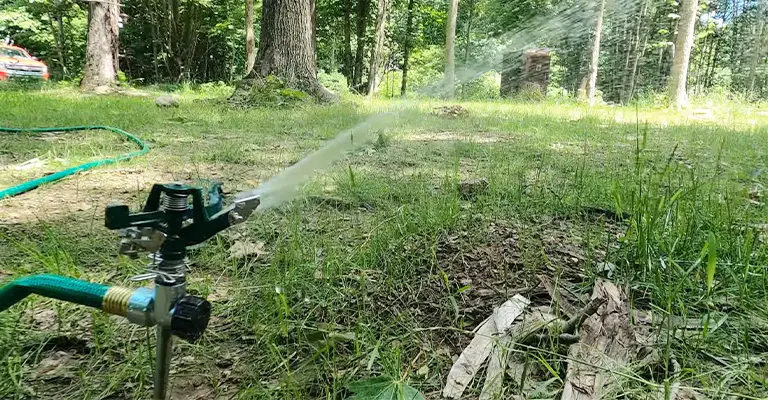
Although technically you may be able to do so, it would be a bad idea. There is a risk of your well drying out and the pump overheating. Getting ready for the morning will be challenging. So, avoiding such risks is a better choice.
Can Over-Pumping Contaminate Well Water?
By over-pumping, we increase the withdrawal rate and pull more sediment down with us. It can cause a cloudy, grey, orange, or brown appearance to water when there is extra sediment present.
In addition, extra sediment can clog the arteries from where your well takes in water, causing problems for your well pump.
Can You Dry A Well By Running A Hose Or Filling A Pool?
It is. Alternatively, you can fill a pool with water to dry a well. Dry wells occur when water is drawn faster than it can be replenished.
A pump in your well starts heating when the water level falls below it, causing it to malfunction rapidly.
How Long Can I Run A Well Pump?
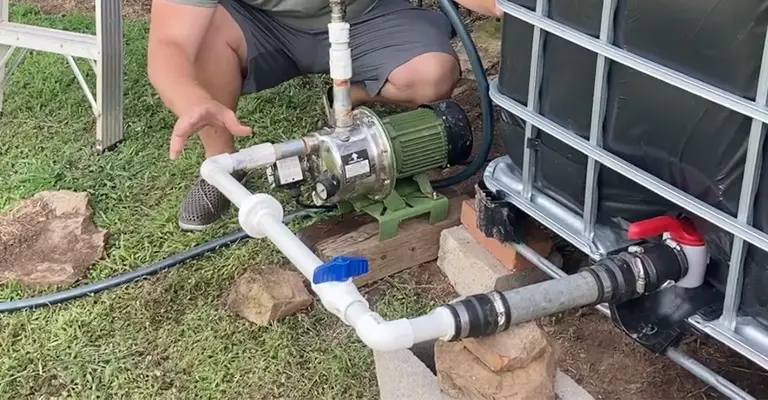
It is common for well manufacturers to mention that pumping time generally takes 6-8 hours. The answer is yes, but the program cannot be run continuously.
It is common for household well pumps to run continuously for two hours. Depending on the model, some high-end units may haul for three hours. After this point, the pumps start to heat and may damage if not stopped.
Can I Fill A Swimming Pool With Well Water?
In fact, yes. Swimming pools can be filled with well water, but it may take a long time depending on the well’s size, depth, and pumping rate and how long you can draw water from it continuously.
In most instances, homeowners with private wells and swimming pools suggest using water tankers to fill their pools.
If you draw a large volume of water from your well, you can damage the well and pressurization system as well as temporarily dry the well.
How Long Will It Take To Fill A Swimming Pool With Well Water?
It would take days to clean a 14-foot above-ground pool with 4000-5000 gallons of water if you take an hour off and one hour every day. The process may take weeks if you don’t perform this exercise hourly around the clock.
It is better to purchase water from local companies. It’s fast, the water is filtered, and they do all the labor-intensive work.
How To Fill The Swimming Pool Well Without Creating Any Issues?
Ensure the water flow is steady as you fill the pool. Make sure you do not use water anywhere else in your home if you want the highest flow rate.
A drop in flow rate is an indication that the well is running dry or your pump is not keeping up with the withdrawal rate. As flow rates decrease, allow the well to catch up.
It may take up to a few days, depending on how big your pool is and how quickly your well replenishes it. Pumps can also pump more water at a greater depth.
Mistakes To Avoid When Running A Hose On Well Water
- Leaving the hose uninspected to prevent contamination if the water runs backwards.
- The well pump water hose has never been tested for leaks after being connected.
- Sealing connections improperly is not checked.
Final Words
In spite of its unlimited availability, well water cannot be used for as long as you wish. Unlike a tank of water, the tank needs time to fill and can only be used for a limited time before running out.
Generally, a well can store 500 gallons of water for 2 hours before running out. Until it has been refilled, it will take some time.
There are typically 500 gallons of water in most wells. The system can also be connected to various pumps, including submersible, jet, and centrifugal pumps.
Although generally used for industrial applications, submersible pumps can draw water from 25 feet underground.
A pump like this is able to hold more water, so hoses can be run for more extended periods. Among all pumps, jet pumps are the strongest. A pair of these devices can reach water 100 feet below the surface of the Earth.
Lastly, the centrifugal pump commonly found in backyards is what you have in your hands. A certain amount of water can only be stored in the wells because they are 25 feet deep. These pumps run significantly longer than the other types we talked about.

